Grow Cilantro at Home, and unlock a world of fresh, vibrant flavor right outside your door! Imagine stepping into your garden and snipping off the perfect amount of cilantro to elevate your tacos, salads, or homemade salsa. No more wilted bunches from the grocery store – just the bright, peppery taste of homegrown goodness.
Cilantro, also known as coriander (for its seeds), has a rich history, dating back thousands of years. Ancient Egyptians used it for medicinal purposes, and it’s been a staple in cuisines across the globe, from Latin America to Southeast Asia. But let’s be honest, sometimes getting fresh cilantro can be a hassle. It seems like it either disappears from the shelves or goes bad in the fridge before you even get a chance to use it. That’s where this DIY guide comes in!
I’m going to share my favorite tricks and hacks for successfully grow cilantro at home, even if you don’t have a green thumb. We’ll cover everything from choosing the right seeds and soil to preventing bolting (that dreaded premature flowering that ruins the flavor). Trust me, with a little know-how, you can enjoy a constant supply of this versatile herb and impress your friends and family with your culinary creations. Let’s get started!
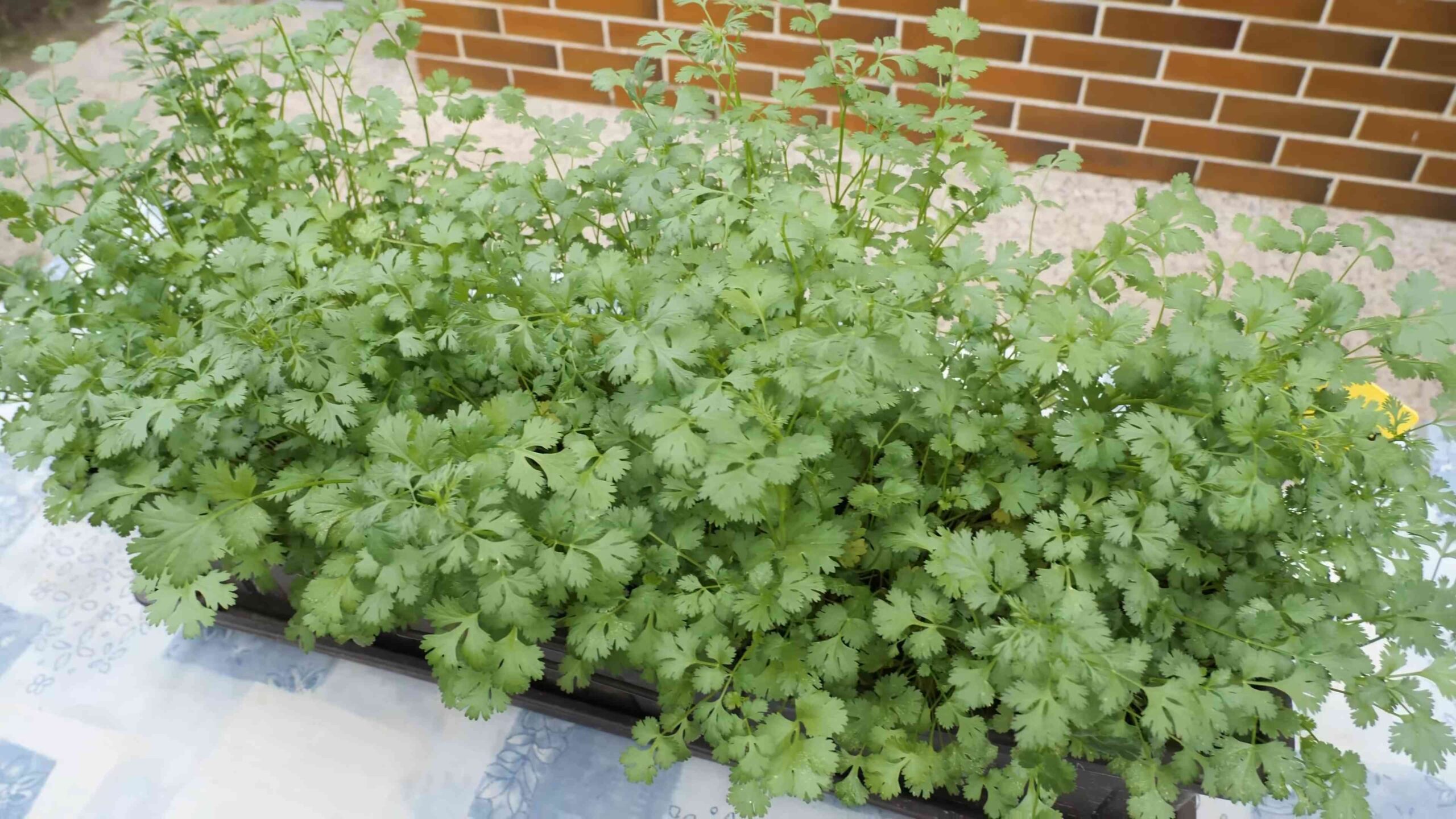
Grow Your Own Cilantro: A Beginner’s Guide to Fresh Herbs at Home
Hey there, fellow herb enthusiasts! Are you tired of buying cilantro at the grocery store, only to have it wilt away in your fridge within days? I was too! That’s why I decided to take matters into my own hands and start growing my own cilantro at home. And guess what? It’s way easier than you might think! This guide will walk you through everything you need to know to have a thriving cilantro patch right in your kitchen or garden.
What You’ll Need
Before we dive into the nitty-gritty, let’s gather our supplies. Here’s a checklist of everything you’ll need to successfully grow cilantro:
* Cilantro Seeds: You can find these at most garden centers or online. Look for varieties that are slow to bolt (more on that later!).
* Potting Mix: Use a well-draining potting mix. Avoid using garden soil, as it can be too heavy and compact.
* Containers: Choose pots that are at least 6 inches deep and wide. Cilantro has a taproot, so it needs room to grow. You can also use a raised garden bed if you have the space.
* Watering Can or Hose: Gentle watering is key to avoid disturbing the delicate seedlings.
* Sunlight: Cilantro needs at least 4-6 hours of sunlight per day. A sunny windowsill or a spot in your garden will work perfectly.
* Optional: Seed Starting Tray: If you want to get a head start, you can start your seeds indoors in a seed starting tray.
* Optional: Fertilizer: A balanced liquid fertilizer can help boost growth, but it’s not essential.
Getting Started: Planting Your Cilantro Seeds
Okay, now that we have our supplies, let’s get our hands dirty! Here’s how to plant your cilantro seeds:
1. Prepare Your Containers: Fill your pots or containers with potting mix, leaving about an inch of space at the top. Gently pat down the soil to remove any air pockets.
2. Sow the Seeds: Cilantro seeds are actually small, round fruits containing two seeds each. To improve germination, you can gently crush the seeds between two hard surfaces (like two plates) to separate the two seeds inside. This isn’t strictly necessary, but it can increase your success rate. Sow the seeds about 1/4 to 1/2 inch deep and about 1-2 inches apart. If you’re using a larger container, you can sow them in rows.
3. Water Gently: After sowing the seeds, water the soil gently until it’s evenly moist. Avoid overwatering, as this can cause the seeds to rot.
4. Provide Sunlight: Place your containers in a sunny location where they’ll receive at least 4-6 hours of sunlight per day. If you’re starting your seeds indoors, you may need to supplement with a grow light.
5. Keep the Soil Moist: Keep the soil consistently moist, but not soggy. Check the soil moisture daily and water when the top inch feels dry to the touch.
Caring for Your Cilantro Plants
Once your cilantro seeds have germinated (usually within 7-14 days), it’s time to focus on caring for your growing plants. Here’s what you need to know:
1. Thinning: Once your seedlings have a few sets of true leaves, you may need to thin them out. This means removing some of the weaker seedlings to give the stronger ones more room to grow. Aim for about 2-3 inches of space between plants. Don’t throw away the thinned seedlings! You can transplant them to another container or add them to your salad.
2. Watering: Continue to water your cilantro plants regularly, keeping the soil consistently moist. Avoid letting the soil dry out completely, as this can stress the plants and cause them to bolt (more on that later!).
3. Fertilizing (Optional): If you want to give your cilantro plants a boost, you can fertilize them every 2-3 weeks with a balanced liquid fertilizer. Follow the instructions on the fertilizer label. I personally don’t always fertilize, and my cilantro still does great!
4. Pest Control: Cilantro is generally pest-resistant, but you may occasionally encounter aphids or other small pests. If you notice any pests, you can try spraying your plants with a mixture of water and dish soap.
5. Bolting: Bolting is when a plant prematurely flowers and goes to seed. This can happen when cilantro is exposed to hot weather or stress. When cilantro bolts, the leaves become bitter and less flavorful. To prevent bolting, try to keep your plants cool and well-watered. You can also choose slow-bolting varieties of cilantro. If your cilantro does start to bolt, you can pinch off the flower buds to prolong the harvest.
Harvesting Your Cilantro
The best part of growing your own cilantro is, of course, harvesting it! Here’s how to harvest your cilantro for the best flavor:
1. When to Harvest: You can start harvesting cilantro leaves when the plants are about 6-8 inches tall.
2. How to Harvest: Use scissors or pruning shears to cut the stems of the cilantro leaves, leaving about an inch of stem on the plant. Avoid cutting more than one-third of the plant at a time, as this can stress the plant and slow down growth.
3. Harvest Regularly: Harvesting cilantro regularly will encourage the plant to produce more leaves.
4. Extending the Harvest: To extend the harvest, you can succession plant cilantro every few weeks. This means planting new seeds every few weeks to ensure a continuous supply of fresh cilantro.
Dealing with Common Cilantro Problems
Even with the best care, you may encounter some problems when growing cilantro. Here are some common problems and how to deal with them:
* Bolting: As mentioned earlier, bolting is a common problem with cilantro. To prevent bolting, choose slow-bolting varieties, keep your plants cool and well-watered, and pinch off any flower buds that appear.
* Yellowing Leaves: Yellowing leaves can be a sign of overwatering, underwatering, or nutrient deficiency. Check the soil moisture and adjust your watering accordingly. If you suspect a nutrient deficiency, you can fertilize your plants with a balanced liquid fertilizer.
* Leggy Growth: Leggy growth (long, spindly stems) can be a sign of insufficient sunlight. Make sure your cilantro plants are getting at least 4-6 hours of sunlight per day. If they’re not, you may need to supplement with a grow light.
* Pests: While cilantro is generally pest-resistant, you may occasionally encounter aphids or other small pests. If you notice any pests, you can try spraying your plants with a mixture of water and dish soap.
Saving Cilantro Seeds
If you let your cilantro plants bolt and go to seed, you can save the seeds to plant next year. Here’s how:
1. Let the Seeds Mature: Allow the seed heads to dry completely on the plant. The seeds will turn brown and become brittle.
2. Harvest the Seeds: Once the seed heads are dry, cut them off the plant and place them in a paper bag.
3. Dry the Seeds: Allow the seeds to dry completely in the paper bag for a few weeks.
4. Store the Seeds: Once the seeds are dry, store them in an airtight container in a cool, dark place.
Cilantro Varieties to Consider
While all cilantro is technically the same species (Coriandrum sativum), there are different varieties that offer slightly different characteristics. Here are a few to consider:
* Slow Bolt: As the name suggests, this variety is slower to bolt than other varieties, making it a good choice for warmer climates.
* Santo: This is another popular slow-bolting variety that is known for its strong flavor.
* Leisure: This variety is known for its compact growth habit, making it a good choice for containers.
* Calypso: This variety is known for its high yield and resistance to bolting.
Using Your Homegrown Cilantro
Now that you have a bountiful supply of fresh cilantro, it’s time to put it to good use! Cilantro is a versatile herb that can be used in a variety of dishes. Here are a few ideas:
* Salsa: Cilantro is a key ingredient in salsa. Add it to your favorite salsa recipe for a burst of fresh flavor.
* Guacamole: Cilantro is also a must-have ingredient in guacamole.
* Tacos: Sprinkle fresh cilantro on top of your tacos for a delicious finishing touch.
* Soups and Stews: Add cilantro to soups and stews for a fresh, herbaceous flavor.
* Salads: Cilantro can be added to salads for
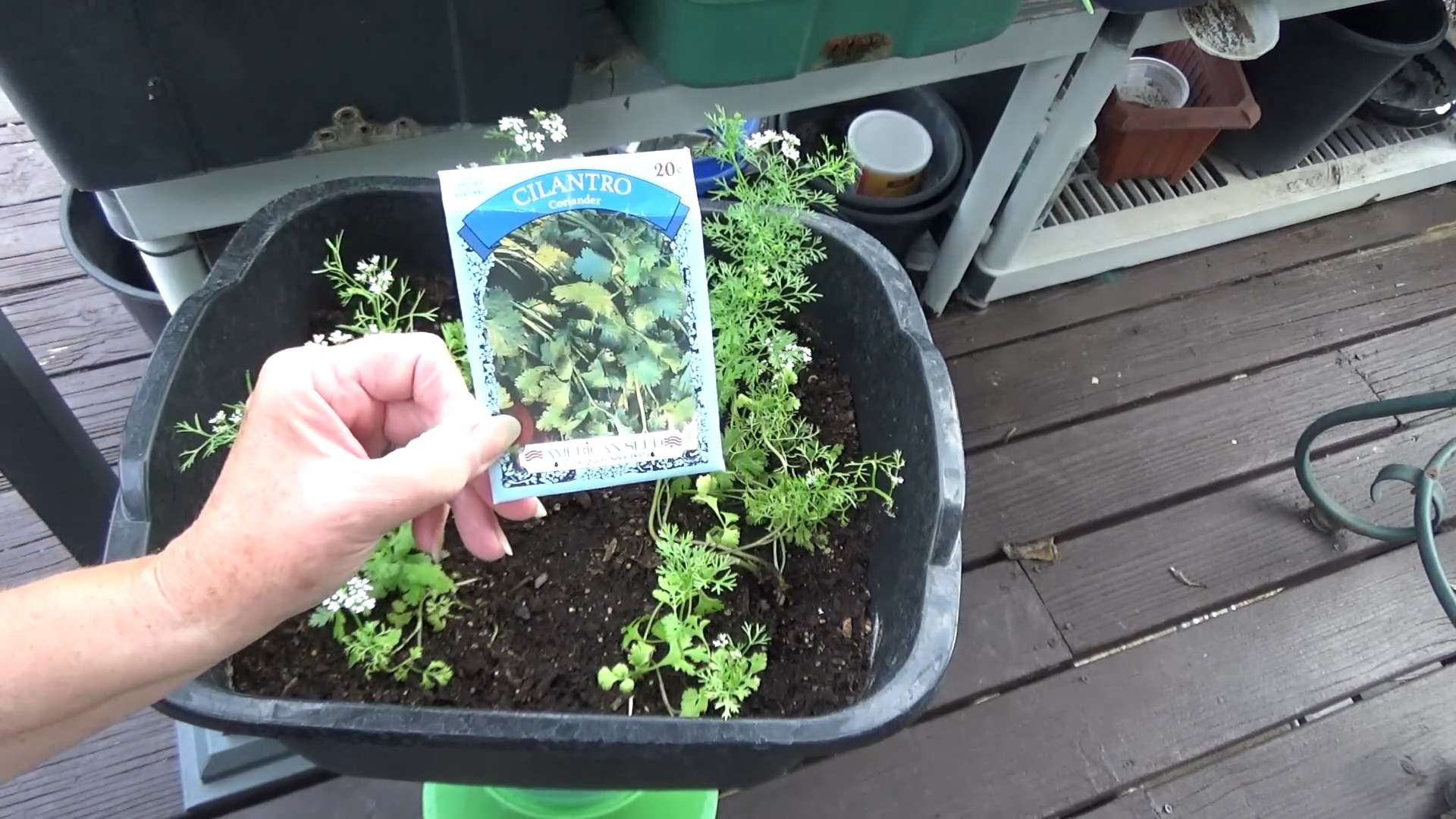
Conclusion
So, there you have it! Growing cilantro at home isn’t just a fun project; it’s a game-changer for your culinary adventures. Imagine having fresh, vibrant cilantro readily available whenever a recipe calls for it. No more sad, wilted bunches from the grocery store or last-minute dashes to the market. This DIY approach puts you in control of the flavor and freshness of your herbs, elevating your dishes to a whole new level.
But why is this a must-try? Beyond the convenience, growing your own cilantro offers a superior taste experience. Store-bought cilantro often lacks the intense aroma and zesty flavor of homegrown varieties. Plus, you’ll be reducing your environmental footprint by cutting down on transportation and packaging waste. It’s a win-win!
Ready to take your cilantro game to the next level? Consider these variations and suggestions:
* Succession Planting: Cilantro is a cool-season herb that tends to bolt (go to seed) in hot weather. To ensure a continuous supply, sow seeds every 2-3 weeks. This way, you’ll always have young, flavorful leaves to harvest.
* Container Gardening: If you’re short on space, cilantro thrives in containers. Choose a pot that’s at least 6 inches deep and wide to accommodate the roots.
* Hydroponics: For a modern twist, try growing cilantro hydroponically. This method uses nutrient-rich water instead of soil, resulting in faster growth and higher yields.
* Companion Planting: Plant cilantro alongside carrots, tomatoes, and lettuce. These plants benefit from cilantro’s presence, as it repels certain pests.
* Cilantro Varieties: Experiment with different cilantro varieties, such as ‘Santo’ or ‘Slow Bolt,’ to find your favorite flavor profile and bolting resistance.
* Harvesting Tips: Harvest cilantro leaves regularly to encourage new growth. Snip the outer leaves first, leaving the inner leaves to mature.
* Seed Saving: Allow some of your cilantro plants to bolt and produce seeds. You can then collect the seeds and use them to grow more cilantro in the future. This is a great way to become self-sufficient and save money.
* Preserving Cilantro: If you have a surplus of cilantro, consider preserving it by freezing, drying, or making cilantro pesto. This way, you can enjoy the fresh flavor of cilantro even when it’s not in season.
Don’t be intimidated if you’re new to gardening. Growing cilantro is relatively easy, even for beginners. With a little patience and attention, you’ll be harvesting your own fresh cilantro in no time.
We wholeheartedly encourage you to give this DIY trick a try. It’s a rewarding experience that will transform your cooking and connect you with nature. Once you’ve experienced the joy of growing your own cilantro, you’ll never go back to store-bought again.
So, grab some seeds, find a sunny spot, and get ready to embark on your cilantro-growing adventure. And most importantly, don’t forget to share your experiences with us! We’d love to hear your tips, tricks, and success stories. Share your photos and comments on our social media pages using #HomegrownCilantro. Let’s build a community of cilantro enthusiasts and inspire others to discover the joys of growing their own herbs.
Growing Cilantro at Home: A Culinary Game Changer
This isn’t just about saving a few dollars; it’s about enhancing your culinary creations with the freshest, most flavorful cilantro imaginable. It’s about connecting with your food and experiencing the satisfaction of growing something yourself. It’s about adding a touch of green to your life, both literally and figuratively.
So, what are you waiting for? Start growing cilantro at home today and unlock a world of flavor and freshness!
FAQ
Here are some frequently asked questions to help you on your cilantro-growing journey:
What is the best time of year to plant cilantro?
Cilantro is a cool-season herb, so the best time to plant it is in early spring or early fall. Avoid planting cilantro during the hottest months of summer, as it tends to bolt (go to seed) quickly in high temperatures. If you live in a region with mild winters, you can also grow cilantro throughout the winter months.
How much sunlight does cilantro need?
Cilantro needs at least 6 hours of sunlight per day to thrive. Choose a sunny location for your cilantro plants, whether you’re growing them in the ground or in containers. If you live in a hot climate, provide some afternoon shade to prevent the plants from bolting.
What kind of soil is best for cilantro?
Cilantro prefers well-drained soil that is rich in organic matter. Amend your soil with compost or other organic materials before planting to improve its fertility and drainage. A slightly acidic to neutral soil pH (6.0-7.0) is ideal for cilantro.
How often should I water cilantro?
Water cilantro regularly, especially during hot, dry weather. Keep the soil consistently moist, but avoid overwatering, which can lead to root rot. Water deeply whenever the top inch of soil feels dry to the touch.
How do I prevent cilantro from bolting?
Bolting is a common problem with cilantro, especially in hot weather. To prevent bolting, plant cilantro in a cool, shady location, water it regularly, and harvest the leaves frequently. You can also choose bolt-resistant varieties of cilantro, such as ‘Santo’ or ‘Slow Bolt.’
When should I harvest cilantro?
Harvest cilantro leaves when they are young and tender, about 4-6 weeks after planting. Snip the outer leaves first, leaving the inner leaves to mature. Regular harvesting encourages new growth and prevents the plant from bolting.
Can I grow cilantro indoors?
Yes, you can grow cilantro indoors, but it requires bright light. Place your cilantro plants near a sunny window or under grow lights. Rotate the plants regularly to ensure even growth.
What are some common pests and diseases that affect cilantro?
Cilantro is generally pest-resistant, but it can be susceptible to aphids, spider mites, and whiteflies. These pests can be controlled with insecticidal soap or neem oil. Cilantro can also be affected by fungal diseases, such as powdery mildew and downy mildew. Prevent these diseases by providing good air circulation and avoiding overwatering.
Can I eat cilantro flowers?
Yes, cilantro flowers are edible and have a mild cilantro flavor. You can use them as a garnish or add them to salads and other dishes. However, once the plant flowers, the leaves tend to become bitter.
What can I do with cilantro seeds (coriander)?
Cilantro seeds, also known as coriander, are a popular spice used in many cuisines. You can harvest the seeds when they are dry and brown. Use them whole or ground in curries, stews, and other dishes. You can also use the seeds to grow more cilantro plants.
How do I store cilantro?
To store fresh cilantro, wrap it loosely in a damp paper towel and place it in a plastic bag in the refrigerator. This will help keep it fresh for up to a week. You can also freeze cilantro by chopping it and placing it in ice cube trays with water or olive oil.
Is cilantro the same as coriander?
Yes and no. In the United States, the leaves of the plant are called cilantro, while the seeds are called coriander. In other parts of the world, the entire plant is referred to as coriander.
What are the health benefits of cilantro?
Cilantro is a good source of vitamins A and C, as well as antioxidants. It has been shown to have anti-inflammatory and antimicrobial properties. Some studies suggest that cilantro may also help to lower blood sugar and cholesterol levels.
Can I grow cilantro from cuttings?
While it’s more common to grow cilantro from seed, you can try propagating it from stem cuttings. Take a cutting from a healthy plant, remove the lower leaves, and place it in water. Once roots develop, transplant the cutting into soil. However, success rates with cilantro cuttings can vary.


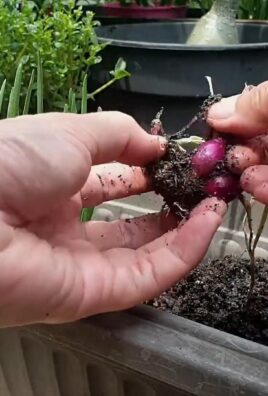
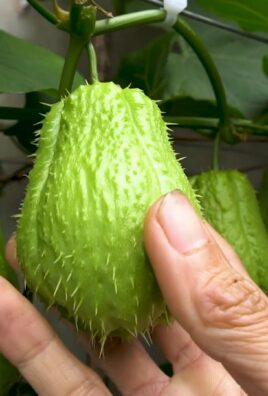
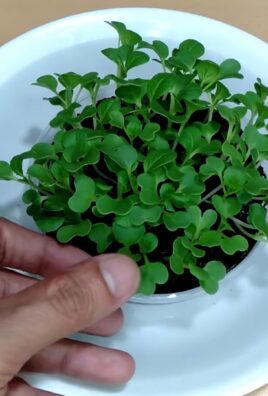
Leave a Comment